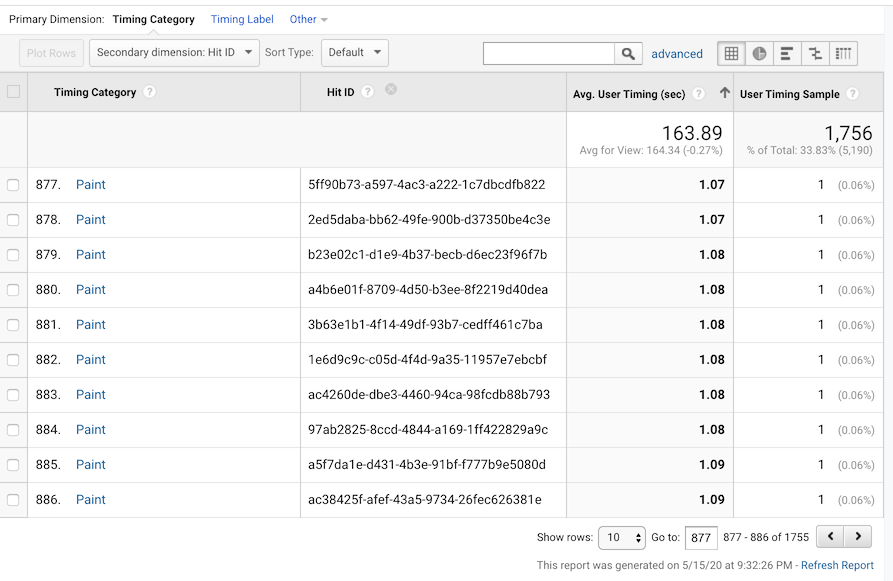Take Full Advantage Of Coverage Precision With Additional Dimension in Google Analytics
Comprehending just how to take full advantage of reporting accuracy with additional dimensions in Google Analytics can significantly boost the deepness of understandings originated from information analysis. By integrating secondary dimensions purposefully, marketing experts can discover hidden patterns and relationships that may not be instantly evident when analyzing main metrics alone. This nuanced approach makes it possible for a more extensive understanding of customer habits and project efficiency, leading the way for more targeted and efficient decision-making. The use of secondary dimensions holds the key to unlocking a wide range of valuable information that can transform the efficiency of electronic advertising and marketing strategies.
Understanding Secondary Measurements in Google Analytics
Secondary measurements allow individuals to segment and additionally dissect information past the main measurement chosen. While the primary measurement may show the overall number of web page sights, including an additional measurement such as 'source/medium' can supply insights right into where the web traffic originated from.
Furthermore, understanding secondary measurements is crucial for developing more customized records customized to details company objectives. By picking the ideal combination of main and secondary dimensions, analysts can reveal patterns, trends, and connections that might or else stay hidden. This nuanced technique to information analysis empowers services to make enlightened decisions based on an extensive understanding of individual actions throughout numerous dimensions.

How to Apply Second Dimensions
When leveraging additional measurements in Google Analytics, the practical application includes selecting certain information criteria to further fine-tune insights past the key measurement's scope. To apply secondary dimensions properly, start by accessing the report or dataset where you wish to dig much deeper right into the information. Within Google Analytics, situate the key dimension that you are currently assessing. Once recognized, click on the dropdown food selection labeled "Additional Dimension." This action will certainly reveal a listing of additional specifications that can be included to your analysis. Select the secondary dimension that straightens with your logical objectives, such as 'Source/Medium,' 'Device Group,' or 'Location.' By selecting a secondary dimension, you can gain much more comprehensive insights into user actions, demographics, or procurement networks. Keep in mind that second measurements assist supply context and granularity to your main dimension data, allowing you to remove even more actionable and purposeful understandings from your Google Analytics records.
Leveraging Second Dimensions for Insights
Using secondary measurements in Google Analytics allows for an extra detailed analysis of information, offering beneficial insights past the primary measurement's scope. By leveraging second dimensions, customers can delve much deeper into the performance metrics of their website or app, uncovering concealed patterns and trends that might not be right away evident when only considering key dimensions.
One secret advantage of my explanation using secondary dimensions is the capacity to sector and filter data much more exactly. This can aid experts and online marketers better comprehend the actions of specific user sections, such as brand-new visitors versus returning site visitors, or website traffic coming from various geographical places.
Moreover, secondary dimensions make it possible for users to contrast and contrast numerous information factors within the same record, offering an extra alternative sight of efficiency (Secondary Dimension in Google Analytics). Combining the key dimension of touchdown web pages with additional dimensions like gadgets or demographics can reveal which web pages are most reliable in engaging users on different tools or from various group teams.
In significance, leveraging additional dimensions in Google Analytics empowers customers to draw out richer insights from their information, bring about even more informed decision-making and ultimately, boosted performance.
Ideal Practices for Additional Dimensions
When analyzing information in Google Analytics, integrating secondary dimensions properly improves pop over to this web-site the depth of understandings stemmed from the main metrics. To make the most out of secondary measurements, it is essential to adhere to ideal methods that guarantee significant and accurate reporting. Firstly, it is vital to choose secondary measurements that align with the primary metric you are analyzing. Choosing appropriate second measurements helps in supplying context and a clearer understanding of the data being examined.
Furthermore, it is suggested to restrict the variety of additional measurements used in a single report to prevent frustrating the evaluation with too much info. Concentrating on a couple of key secondary dimensions each time can cause even more actionable and focused insights. Furthermore, take into consideration trying out various mixes of secondary and main measurements to reveal unique trends and patterns that may not be obvious when considering the information in seclusion.
Advanced Evaluation Strategies With Second Measurements
Checking out elaborate data connections with the calculated application of additional dimensions can introduce nuanced insights that boost the depth of evaluation in Google Analytics. By incorporating secondary measurements with main information sets, sophisticated evaluation methods can be employed to remove useful info.
Additionally, secondary measurements can boost the evaluation of conversion courses by supplying added context. Recognizing the different touchpoints an individual communicates with before converting can be essential in optimizing the my explanation customer trip - Secondary Dimension in Google Analytics. By making use of secondary measurements to look into specifics such as web traffic sources or gadgets used, online marketers can tailor approaches to target high-converting channels properly
Final Thought

To enhance information analysis and gain deeper insights right into customer behavior, understanding second dimensions in Google Analytics is essential - Secondary Dimension in Google Analytics. Secondary dimensions permit customers to segment and even more study information beyond the primary measurement picked. While the key dimension might show the complete number of page sights, adding an additional dimension such as 'source/medium' can offer insights right into where the web traffic originated from.When leveraging second dimensions in Google Analytics, the functional application involves choosing certain data parameters to additional improve understandings beyond the primary dimension's scope. Remember that second measurements assist give context and granularity to your primary dimension information, enabling you to remove more workable and purposeful insights from your Google Analytics reports